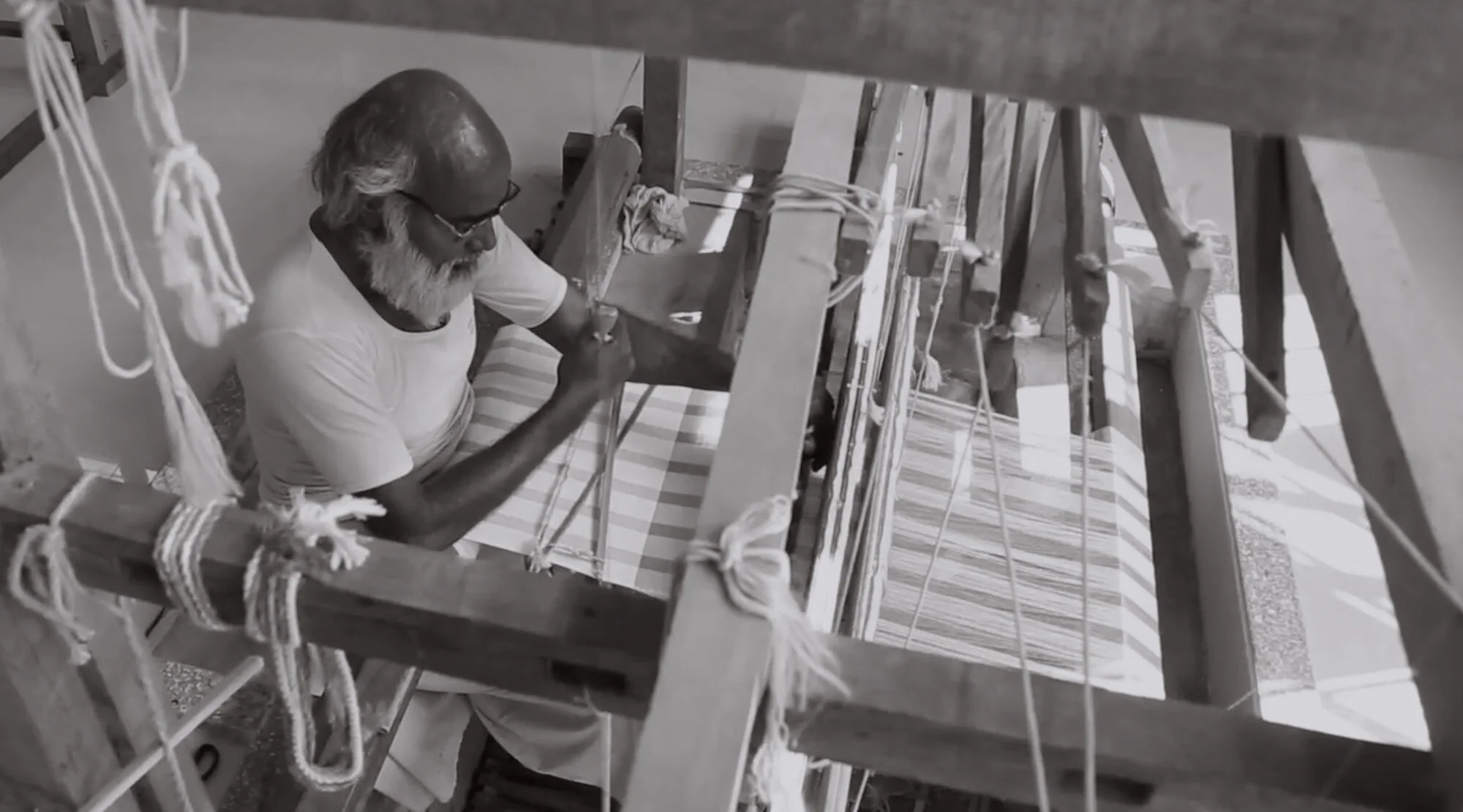The Craft of Weaving
“One of the most ancient crafts, hand weaving is a method of forming a pliable plane of threads by interlacing them rectangularly. Invented in a pre-ceramic age, it has remained essentially unchanged to this day."
Anni Albers (1899 -1994)
A foremost textile artist of the twentieth century, in her book On Weaving
Weaving is an art, and the process in parts resembles making music or fine cooking.
Each step of the process: colouring the yarn, preparing the warp and weft, and weaving on traditional wooden looms; is touched by the adept hands of our master weavers who work for days to craft the scarves.
Our passion for weaving and pride in what we do ensure the uncompromising quality of the scarves we create.
Bobbins, Pirns and the Warp
We start with natural yarn that comes in a cone, skein, or hank.
Once the yarn is washed with water, dyed, and dried, it is wound onto bobbins (for warp) and pirns (for weft), by hand using a spinning wheel.
The bobbins are placed in a frame and hundreds of strands of yarn from the bobbins are passed, thread by thread, through a raddle, which ensures even spacing between threads.
Taut and parallel to each other, these threads are wound around a beam. The beam is then taken away to get it ready for the loom.
Preparing the Warp
Once the yarn has been wound on the warp beam, it takes two tedious steps to ready it for the loom.
In the first step, the warp is threaded through the heddles. Each warp thread goes through the eye of a heddle. To pass the threads through the eyes of the heddles, two weavers work in tandem.
One of them fiddles a hook through the eye while the other guides a single thread — on the other side of the heddle — for the hook to catch it and pull it to the other side. This set of actions is repeated at least a few hundred times.
The next step is a meticulous task entailing the drawing individual threads through the reed, a comb-like tool to separate the warp threads; and finally tying these threads in.
Readying the Loom…
…for weaving is like arranging the band for a session.
To prepare the loom for weaving, the warp beam and the reeds in frames are loaded together on to the loom.
Readying the loom for weaving is like arranging a band for a musical session: just like the selection of musicians depends on musical arrangements for the evening, design — pattern and weave — determines which and how many of the shafts on the loom will be used.
The selected shafts are then tied to the individual reeds (and frames).
Weaving
The repetitive actions on the wooden tools and parts of a loom make the weaving process rhythmic, and almost musical.
The wooden pedals are used to raise or lower the heddles, not unlike the pedals on a hi-hat or a bass drum. When the heddles are lifted, the shuttles carrying the weft pass through the warp creating another set of sounds.
Just like the pedals of a piano, which either muffle or highlight a note, pedals in a loom ensure that each thread receives the right accentuation for the desired pattern.
Once the frame with the reeds is pulled to push weft to the edge of the woven fabric, the cadence ends; and the rhythm starts anew.
Depending on the design and size of the scarf, the weaving takes from a couple of hours to a couple of days and the rhythms vary from staccato to more continuous sounds.







